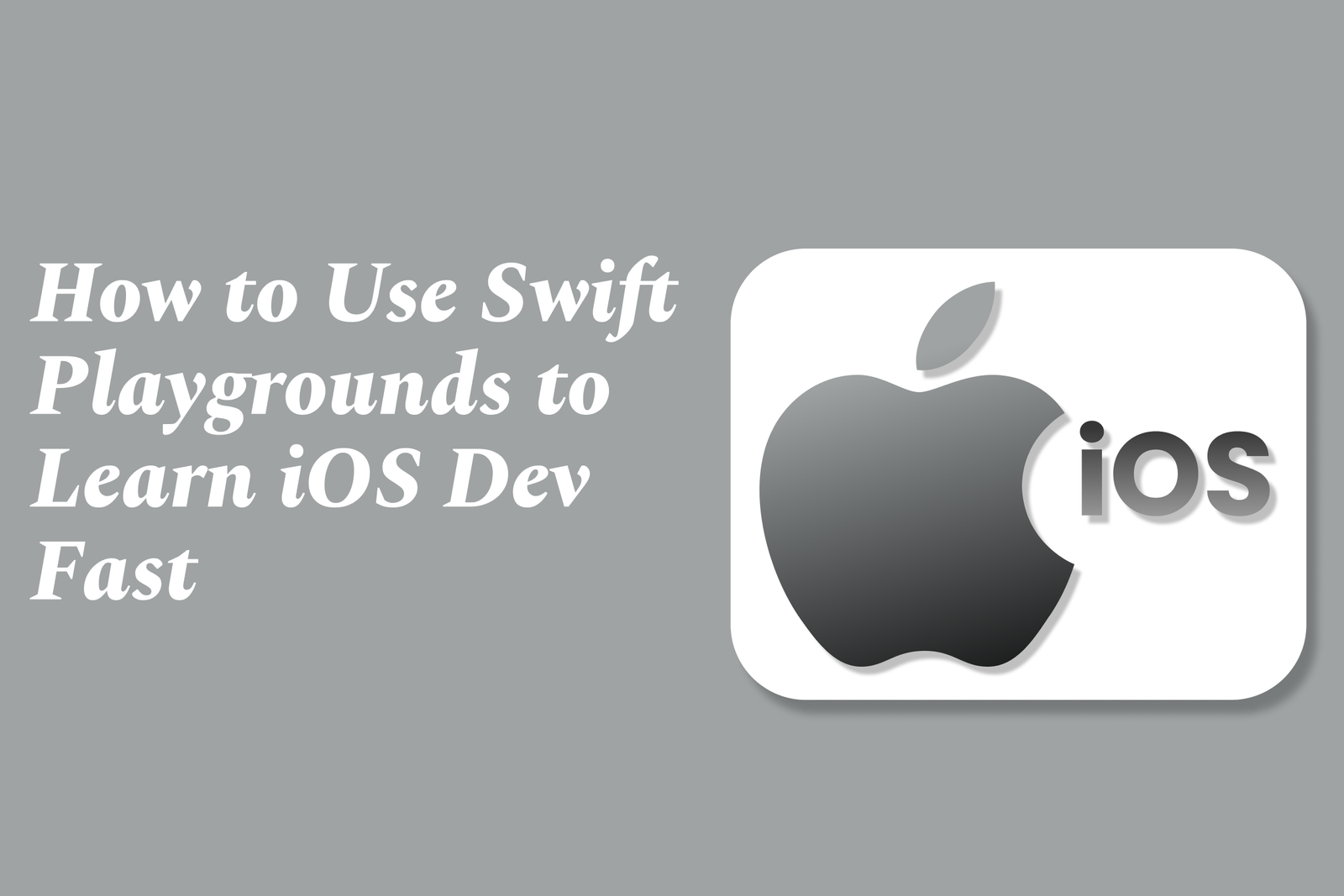How to use Swift Playgrounds to learn iOS dev fast
Swift Playgrounds is an interactive app that makes learning iOS development fast and fun by letting you write Swift code and see results instantly. It’s perfect for beginners to practice coding, experiment with ideas, and build foundational skills before moving to full app development.
How to Use Swift Playgrounds to Learn iOS Dev Fast
1 ) Set Clear Learning Goals
Be serious about why you want to learn iOS development: prototyping, mastering the platform, or building production apps.
Understand your motivation to tailor your learning approach for fast, effective progress.
2 ) Choose a Personal Project
Start with a small, meaningful app idea that solves a personal problem or interest, such as a todo list or a simple utility.
Using a personal project provides context and motivation, and helps reinforce concepts through hands on practice.
Swift Playgrounds is an ideal environment for experimentation and immediate feedback.
3 ) Master the Languages: Swift and Objective C
Learn Swift thoroughly as it is the primary language for iOS development with a modern and expressive syntax.
Also acquire a basic understanding of Objective C because much existing iOS code and frameworks use it.
Use Apple’s official resources like “The Swift Programming Language” book and Objective C guides.
Avoid third party languages and tools for iOS app development because native tools like Xcode and Swift are optimized and best supported.
4 ) Focus on Apple's Official Documentation
Use Apple’s free, comprehensive tutorials such as “Start Developing iOS Apps With Swift”.
Supplement learning with WWDC videos and official framework documentation for deeper understanding.
Refer to community sites like NSHipster and RayWenderlich for beginner friendly explanations, but prioritize Apple’s guidance to avoid conflicting or outdated practices.
5 ) Learn by Building: Stop Reading, Start Doing
After grasping core concepts like MVC architecture and UIView usage, dive straight into building your app.
Use trial and error extensively—search online (Stack Overflow, official docs) to solve practical problems.
Avoid premature optimization or adopting complex architectures (e.g., VIPER) until you have fundamentals down.
6 ) Embrace the Ecosystem and Tools
Use Swift Playgrounds for quick prototyping, experimenting, and learning syntax.
Transition to using Xcode as you build more structured apps with UI and functionalities.
Understand that learning platform frameworks will take most of your time, so focus efforts on mastering those within the native language context.
Summary
Swift Playgrounds accelerates learning iOS development by offering an interactive environment tailored for rapid experimentation. Combining this with a personal project, thorough understanding of Apple’s languages and documentation, and a strong culture of hands on building will fast track your skills toward shipping real iOS applications.
https://justacademy.in/news-detail/android-updates-for-foldable-phones
https://justacademy.in/news-detail/swiftlint-updates-for-cleaner-code-in-2025
https://justacademy.in/news-detail/flutter-india-summit-2025:-key-takeaways
https://justacademy.in/news-detail/flutter-community-meetups-in-2025
https://justacademy.in/news-detail/ai-in-flutter:-smarter-ux-and-features
Related Posts
Java supports GDPR and data privacy by enabling secure data handling through encryption, controlled access, and precise data management. It allows developers to minimize PII exposure, ensure data confidentiality, and design workflows that comply with data protection regulations effectively.
Java code quality tools have evolved to include advanced static analysis, integrated security checks, and AI-powered code reviews. These updates help developers detect bugs, enforce coding standards, and enhance security, streamlining the development process and improving overall code reliability.
Java remains a cornerstone in big tech companies, evolving with modern features like records, pattern matching, and virtual threads. Its robust ecosystem, enhanced performance, and growing AI integrations keep it vital for both legacy systems and innovative new projects.
Java and CI/CD pipeline optimizations streamline Java application development by automating builds, tests, and deployments. They improve efficiency through parallelization, caching, and secure secrets management, enabling faster feedback loops and more reliable, scalable software delivery.
Java supports modern cryptography standards through its flexible Java Cryptography Architecture (JCA), enabling integration of advanced algorithms like AES, EdDSA, and post-quantum tools. Libraries like Bouncy Castle offer FIPS-certified, hardware-accelerated implementations for secure development.
Java 23 enhances record patterns by enabling concise, direct destructuring of record components within pattern matching, simplifying type checks and data extraction. This improvement boosts code readability and expressiveness by reducing boilerplate in handling immutable data classes.
Java remains a top choice for mobile app backends, powering scalable, secure, and high-performance server-side solutions. Latest trends include cloud-native microservices, reactive programming, and enhanced JVM optimizations, enabling efficient, flexible, and robust mobile backend development.
Java SE 24 and LTS Java SE 21 offer enhanced features and performance, while Apache Spark 4.0.0 introduces Scala 2.13 support and advanced ML and SQL capabilities. Together, they empower developers to build scalable, high-performance data applications with modern tools.
JUnit 5 modernizes Java testing with a modular architecture, improved assertions, and seamless Java 8+ support. Beyond JUnit, tools like Mockito and AssertJ enhance mocking and assertions, creating a powerful, flexible ecosystem for writing clean, efficient Java unit tests.
Java plays a pivotal role in cloud automation tools by providing a robust, platform-independent language used to build scalable automation frameworks like Jenkins and Selenium, enabling efficient CI/CD pipelines, testing, and orchestration across diverse cloud environments.










